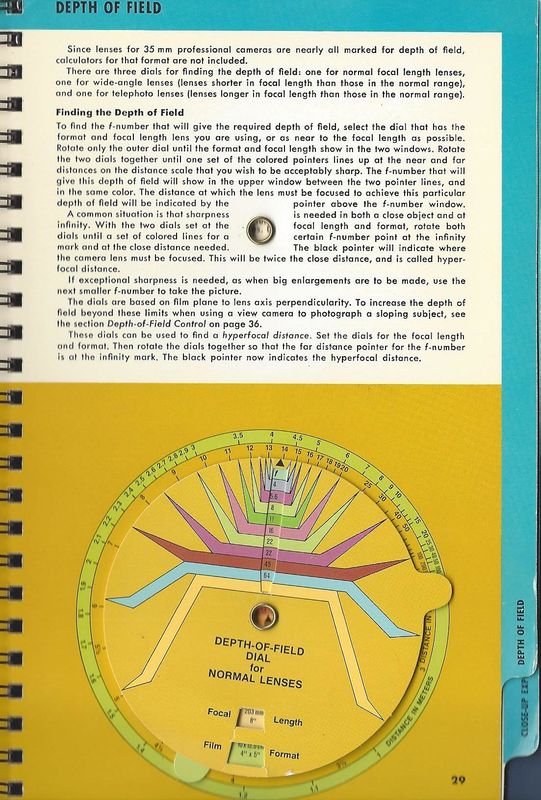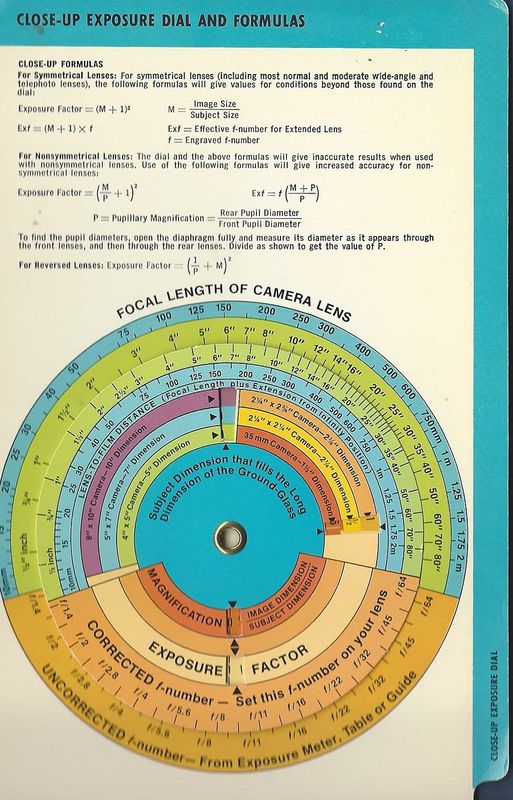Extension Tubes
Nov 7, 2020 08:27:17 #
larryepage
Loc: North Texas area
E.L.. Shapiro wrote:
Trying to calculate the depth of field mathematica... (show quote)
This is an excellent summary of the subject. Back in film days, I did a lot of "short distance" shooting using a macro lens, extension tubes, and bellows. I found the extension tubes and bellows to be problematic when used with any "regular" lens for one simple reason...none of those lenses were corrected for a flat field of focus. The result was a very small usable image area in the center of the frame. And the loss of light, often several stops, can be a real problem when working at short distances where using a tripod is not an option.
As far as depth of field, yes...it is tied to focal length, magnification, aperture, and distance, all of which are tied absolutely to each other. Saying that any one or two of them don't matter is just being oblivious.
What most folks don't realize is that this means that any framed image exposed at the same aperture will have the same depth of field no matter how it was captured (if the film frame size is the same). Walking closer to get a tighter framing has the identical affect on depth of field as using a longer lens to achieve the same frame.
Nov 7, 2020 08:29:49 #
Nov 7, 2020 09:16:58 #
petrochemist
Loc: UK
Winslowe wrote:
Depth of field is determined by aperture and magnification. Focal length and distance play no part.
They do play a part but their combined part is taken up and entirely covered by the magnification term.
Nov 7, 2020 10:57:47 #
petrochemist wrote:
They do play a part but their combined part is taken up and entirely covered by the magnification term.
So this is from Marc Levoy's lecture site, showing you could get depth of field from aperture, subject distance, and focal length, formula in the attachment:
depth of field (DTOT) is governed by circle of confusion (C),
aperture size (N), subject distance (U), and focal length ( f )
So subject distance and focal length ratio substitute for magnification in this formula, or vice versa?

Nov 7, 2020 11:40:07 #
larryepage wrote:
This is an excellent summary of the subject. Back ... (show quote)
Here's the problem:
According to the formula, focal length and aperture are not on one isolated mathematical equation operating to depth of field.
As I mentioned in my previous post, he workg in a field it is not practical to do calculations or refer to an isolated textbook point. This issue here is choosing a method or a lens to a specific job. So...although the focal length and aperture do not appear n the formula, those factors are essential in selecting a focal length and which aperture setting to prioritize when workg and trying to achieve a particular result, more or less depth of field as desired.
Distortion is not in the formula either but it factors into any given work situation. Perhaps a wide-angle lens will enable more depth of field but will exaggerate a foreground and cause distant objects to appear smaller.
The practical photographer has to be able to make decisions and compromises based on practically applied methodologies.
This is not to say that studying science, physics, optics and geometry and mathematics is bad or unnecessary. Theory is important but it has to be combined with compromise and overlap.
Here are some pertinent textbook excerpts.
"For focal distances resulting in high magnification, or very near the hyperfocal distance, wide-angle lenses may provide a greater DoF than telephoto lenses.
A telephoto lens itself does not have less depth of field. ... If you are magnifying your subject by the same amount (meaning that they fill the image frame by the same proportion), then a telephoto lens will give the same depth of field as other lenses".
Nov 7, 2020 12:50:02 #
petrochemist
Loc: UK
bleirer wrote:
So this is from Marc Levoy's lecture site, showing you could get depth of field from aperture, subject distance, and focal length, formula in the attachment:
depth of field (DTOT) is governed by circle of confusion (C),
aperture size (N), subject distance (U), and focal length ( f )
So subject distance and focal length ratio substitute for magnification in this formula, or vice versa?
depth of field (DTOT) is governed by circle of confusion (C),
aperture size (N), subject distance (U), and focal length ( f )
So subject distance and focal length ratio substitute for magnification in this formula, or vice versa?
Yes, an excellent lecture series and the substitution can be done where approriate. Magnification is rarely very useful for subjects at distances more than 10 focal lengths. In macro photography the magnification version is usually more useful but both give the same result - as long as the true focal legth is used. Focal breathing can mean the focal length is very different from the value quoted on the lens.
Nov 7, 2020 16:58:40 #
Winslowe wrote:
Depth of field is determined by aperture and magnification. Focal length and distance play no part.
I should state this differently. Focal length, aperture and distance are needed to calculate depth of field. For any given magnification and aperture, depth of field will be the same, no matter the focal length or distance. (For the same image size, of course). Hope this clears it up.
Nov 7, 2020 21:38:04 #
I've had my trusty (the 1980s) Kodak Professional Photoguide tucked away in my camera bag for many years and I transfer it every time I get a new camera bag. his is the first time, in years, that I pried it out from between the padding and the Velcro compartments.
I love this particular close up dial because it helps explain all the ins and outs of close-up work and all the factors concerned.
The Depth of field Dial help explains the function of focal length and aperture factor into calculating depth of field.
I love this particular close up dial because it helps explain all the ins and outs of close-up work and all the factors concerned.
The Depth of field Dial help explains the function of focal length and aperture factor into calculating depth of field.
If you want to reply, then register here. Registration is free and your account is created instantly, so you can post right away.


